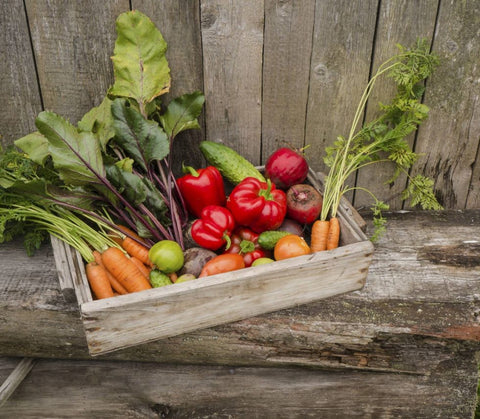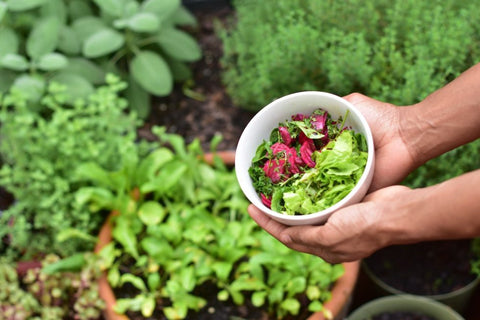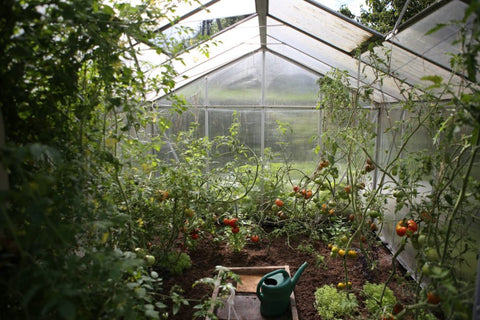So you’ve had a great summer, with a thriving garden (whether indoor or outdoor) and you’ve picked all the tomatoes, summer squash, and lettuce you can eat. The question now becomes, how do you make the transition from sumTmer, to fall gardening? Your end-of-season care plays a big role in whether or not your edible garden will continue to perform well in the future. The first step is making sure you’ve harvested all the tasty summer crops you planted and properly stored them for later (if you can’t eat them all at once). Read on for our tips on setting up your edible garden for success for years to come.
When to Harvest Summer Vegetables
First, Use this harvest guide to recognize when your summer savory vegetables, beans, tomatoes, bibb lettuce, and other summer vegetables are at the peak of flavor.
Harvesting Beans In The Summer
You should pick snap beans while they are young, and serve them in salads. The other option would be to wait until they reach full size. This would garner a more bountiful harvest. Pick every other day when the beans begin to produce fruit so that the plant reaches its full potential. One way to store beans is to blanch and/or freeze them. To blanch, just stick them in boiling water for 1 minute and then quickly transfer them to ice water to cool. This will brighten and fix their color while preserving the pods’ crisp texture.
Harvesting Tomatoes In The Summer

With tomatoes, it is fairly easy to tell when they are perfectly ripe, because they will show deep color, and still feel slightly firm (not hard) when you give them a squeeze. Similar to avocados or peaches in the slight softness that informs how ripe the fruit is.
As tomatoes start to ripen up, their color will change from a vibrant medium-green to a lighter shade, often with pink or yellow stripes. These are called “breaker,” or mature green-tomatoes and can be chopped into salsas, pickled or fried (fried green tomatoes anyone?)
You can store your harvested tomatoes at room temperature indoors, or a shady place outside! Never refrigerate tomatoes, as cold temperatures cause the flavor compounds to break down. Tomatoes can also be frozen, canned, or dried for later use.
Harvesting Peppers In The Summer
For harvesting your peppers, make sure to use a sharp knife or pruning shears to cut the peppers, keeping a short stub of stem attached. Try not to pull the pepper with your hands, as it will cause the entire branch to break. Rinse the peppers and pat them dry, then store in your refrigerator. If you pick too many peppers to eat right away, try preserving or pickling them to store them for later use.
When it comes to harvesting, wait until your peppers are full size and fully colored. Peppers have a long time window for harvest and can hang on a plant for several days past maturity. So it’s better to wait than to get too eager and harvest too early. Another tip: Peppers will produce the most if you pick them often, so keep that in mind when going out for your harvest!

Finishing Your Summer Harvest Strong
When you feel like you are ready to close up and finish out your summer garden, pick ALL of the remaining fruit, vegetables, and edible leaves. Don’t worry if they are not quite ripe, many fruits (like tomatoes) will continue to ripen once they’ve been picked. One idea to get rid of your summer harvest is to have an end of summer gathering and feast to share the bounty. This is also a good time to make plans to preserve, freeze, or give away excess produce.
Wondering what to do with your herbs? You can continue to grow many of your herbs – you may just need to bring them indoors and set them near a sunny window sill. However, you can also dry your herbs, such as thyme, basil, lavender, and rosemary to use for winter recipes.
To harvest and save the seeds of beans and summer squash, allow the fruits to fully ripen and dry on the vine before picking. You can store the seeds in a jar or envelope in a cool, low-moisture space and use them next season.
What To Do With Your Edible Garden After The Summer Harvest

As summer comes to an end, there are a few cleanup items to do in order to get ready for fall and prepare for the next season. Begin to strip plants of any remaining fruits and seeds and remove them from your garden beds. If you have a compost, this is a great place to dispose of them. Otherwise, toss in the green waste bin. Make sure to remove any plants that show signs of disease (note, that anything covered in powdery mildew should be added to the garbage bin, not the compost pile). Another task you can do is to empty and clean all your pots, as well as replenish soil nutrients.
It is so important to have healthy soil, especially if you want a successful and productive edible garden every single year. This year’s herbs and vegetables have spent a lot of time taking up soil nutrients to fuel their growth. If you plant the same crops in that same soil next season without adding any additional nutrients, the plants won’t produce as much fruit or grow as tall. It is super important to take care of your soil and replenish all of its good nutrients so that you can maintain a healthy edible garden for years to come.
So there you have it, this weekend’s gardening tasks all in one place! Even if you don’t have a full outdoor garden, you can still tend to your indoor edible plants and get them all set up to be ready for growth next summer. Let us know how it goes and always reach out if you have any questions!
Are you passionate about growing your own food? Want to be part of an exclusive gardening community? Join our private Facebook group for access to a community of gardeners, foodies, and curious folx who want to learn more about growing their own bounties. We would love to have you!











There are no comments for this article. Be the first one to leave a message!